
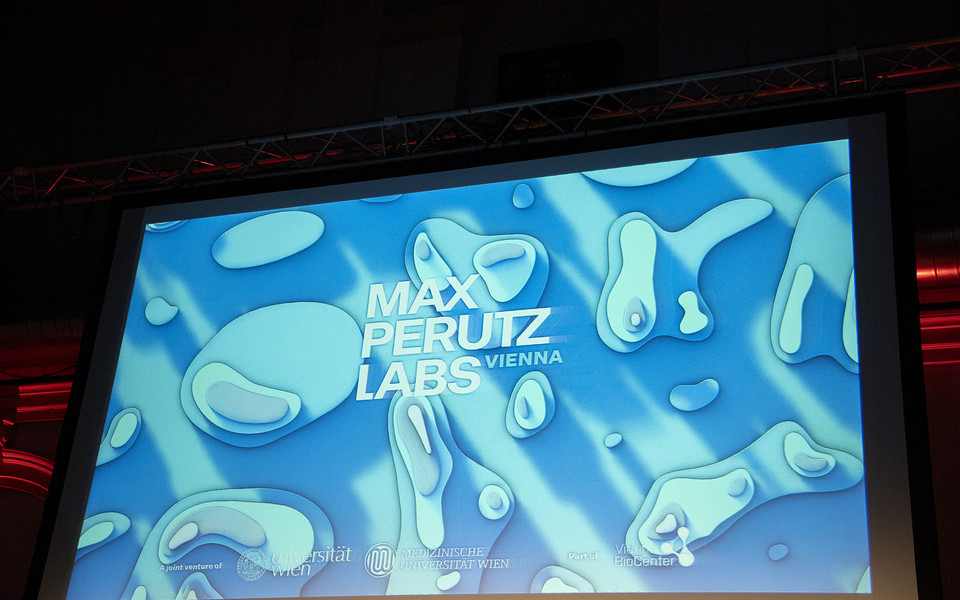

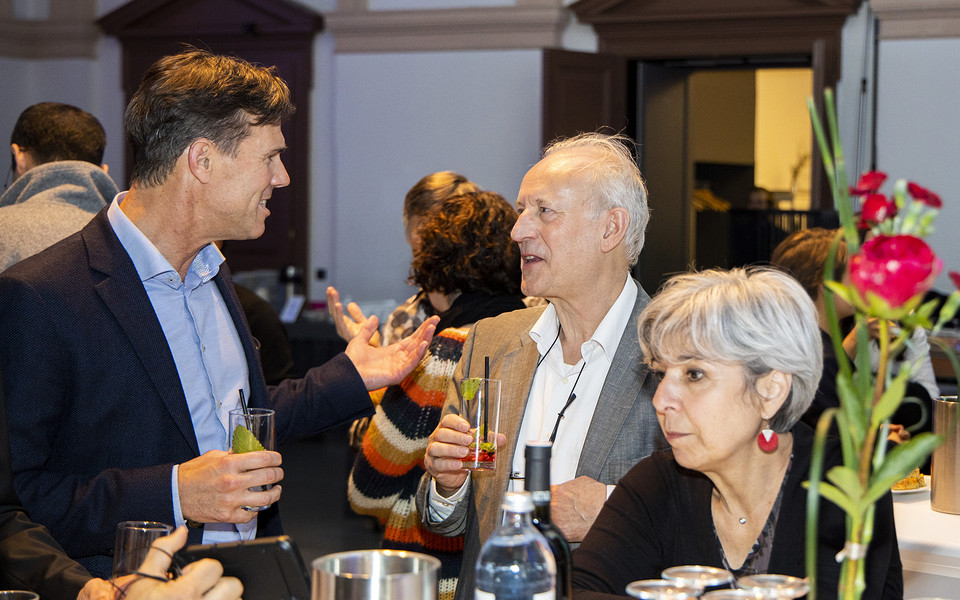
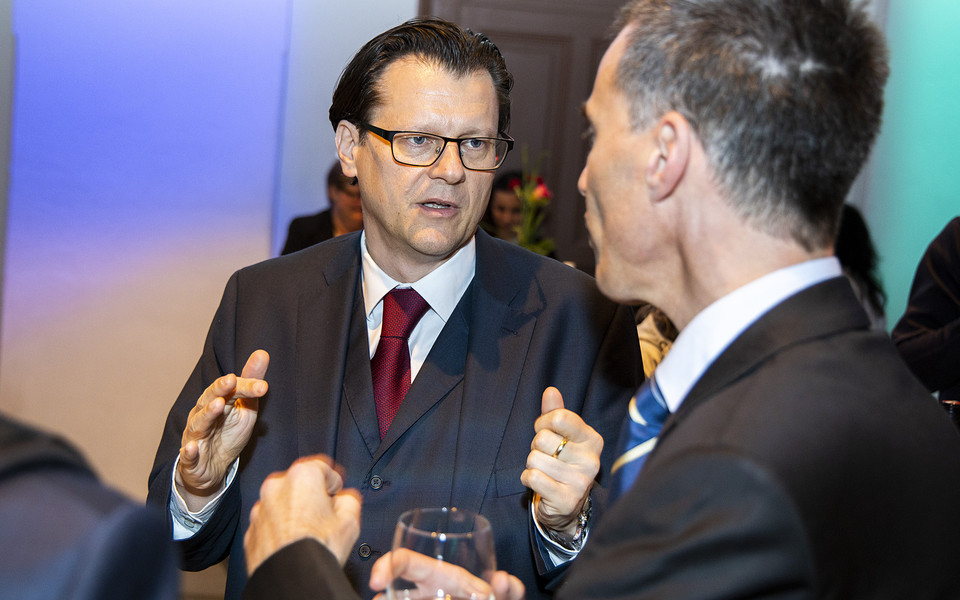
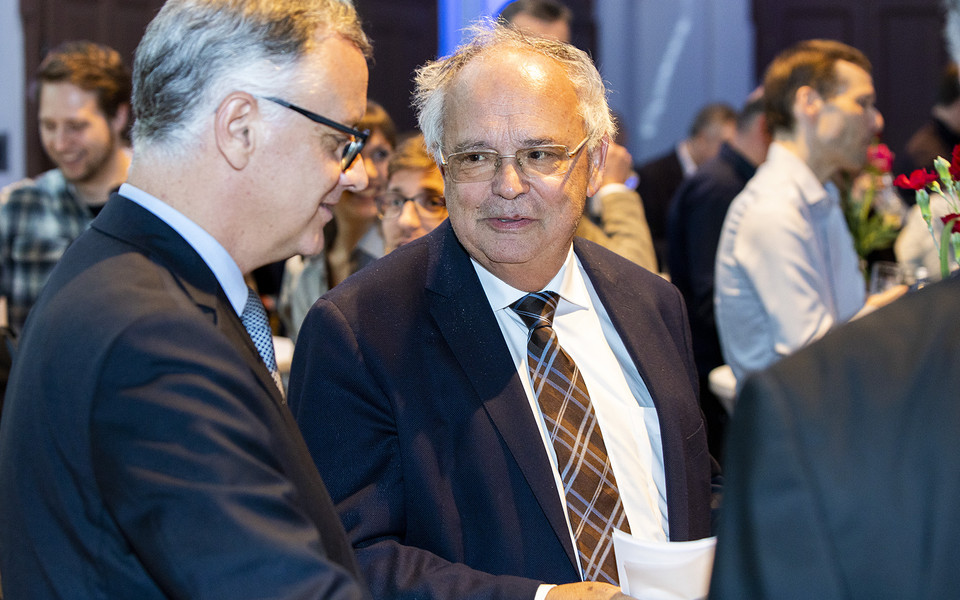
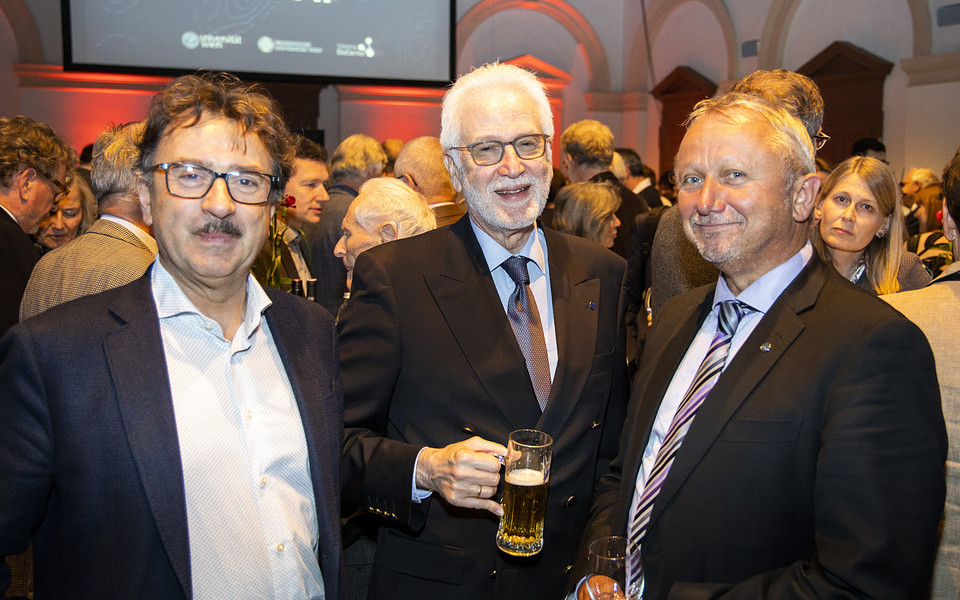
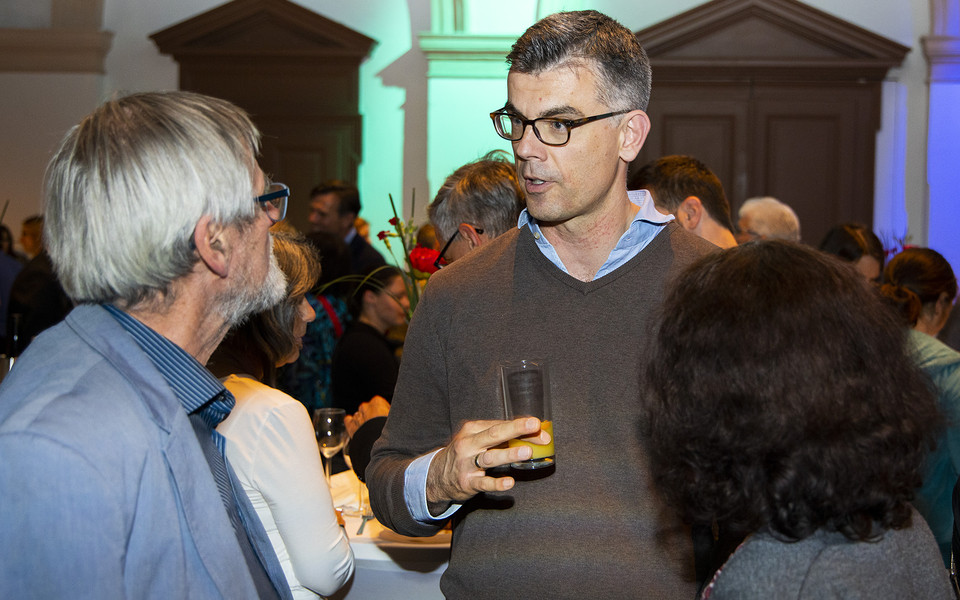
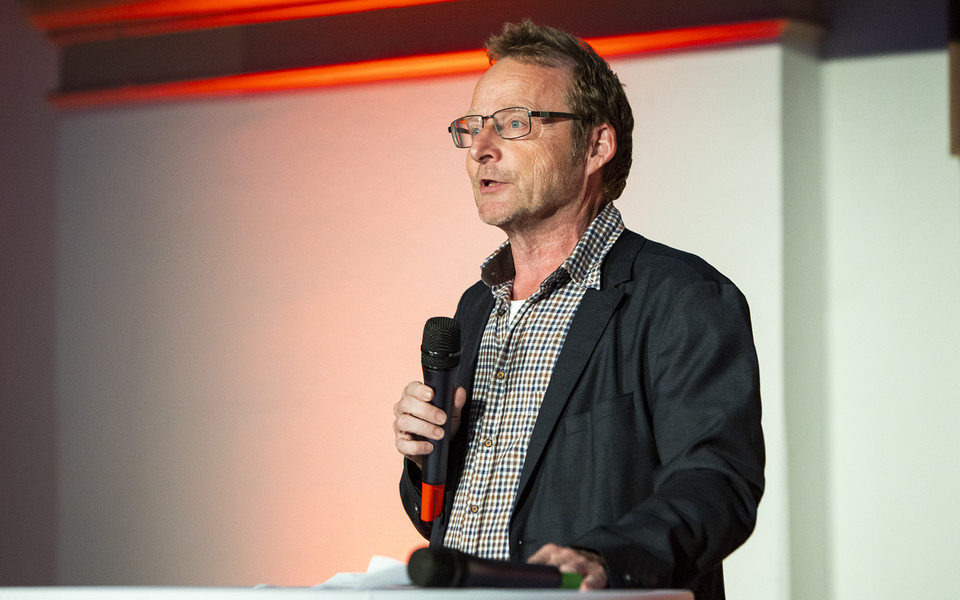
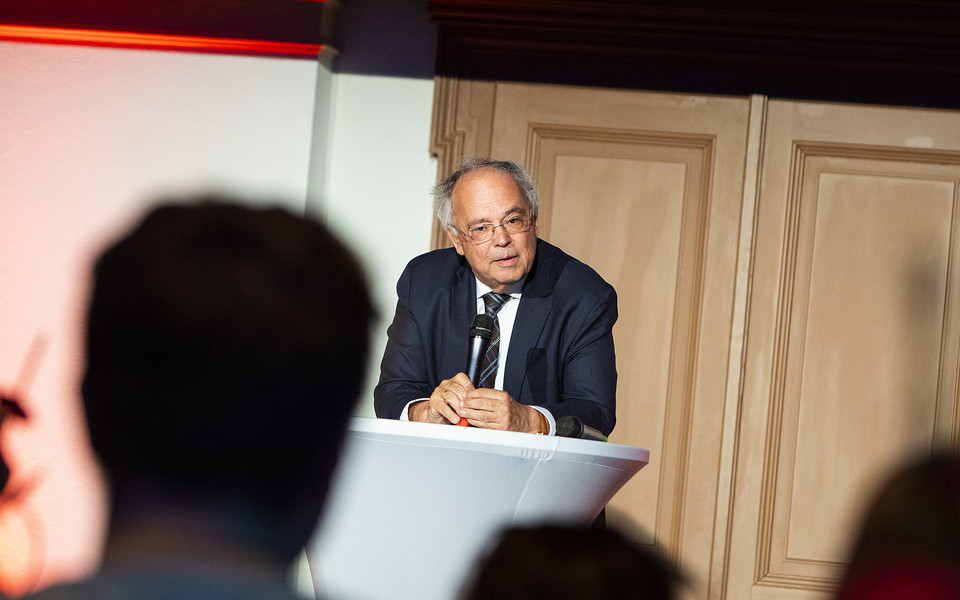
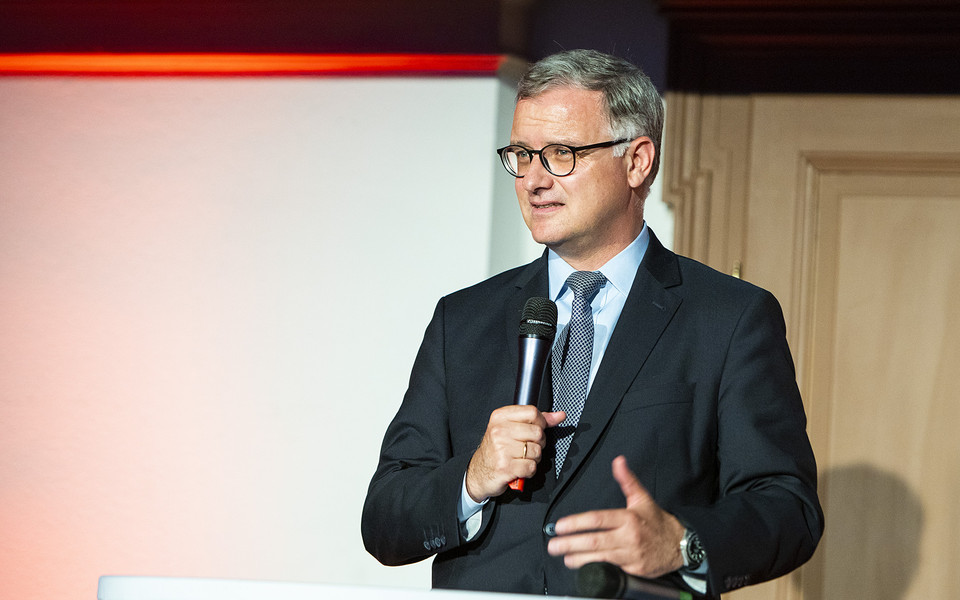
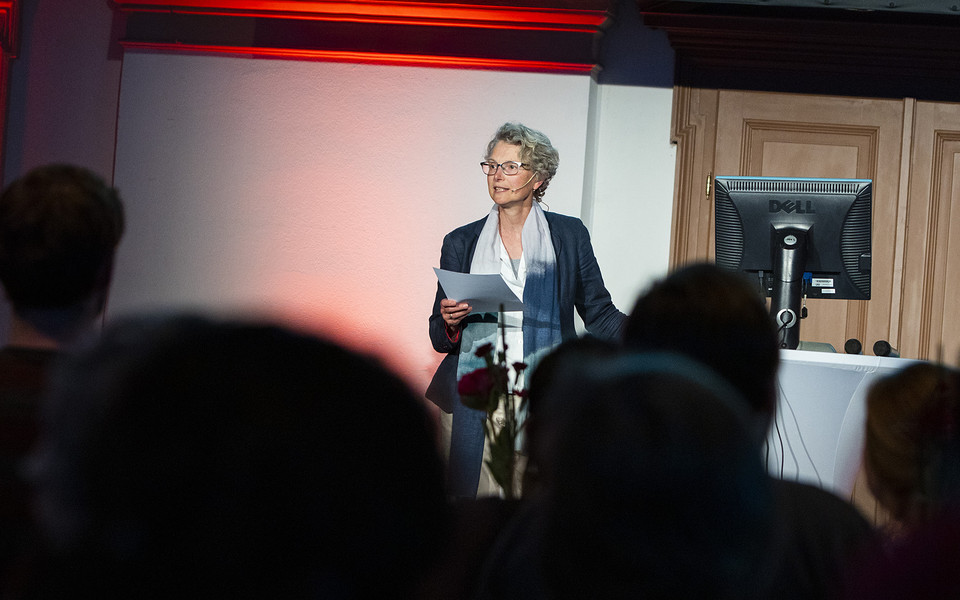
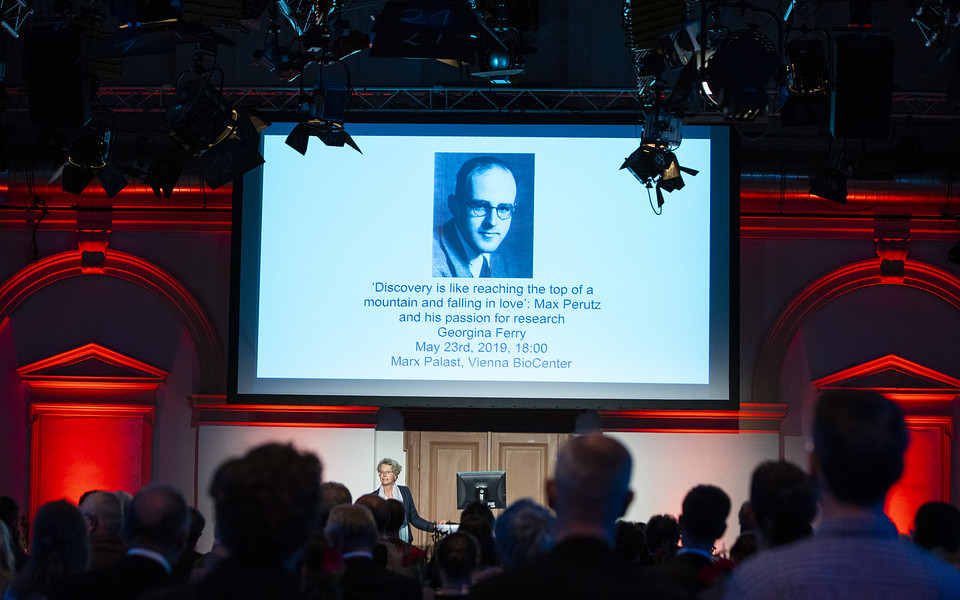
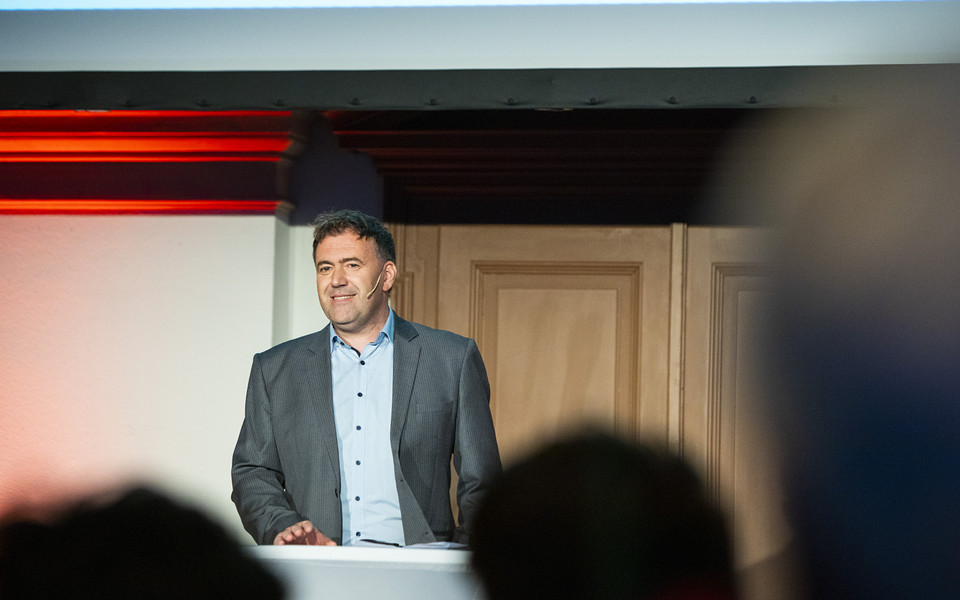
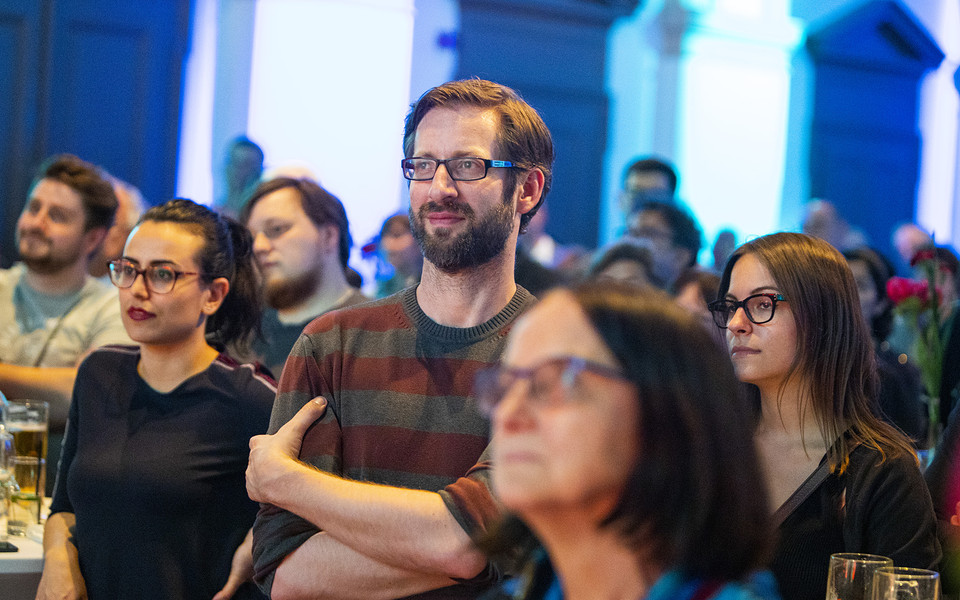
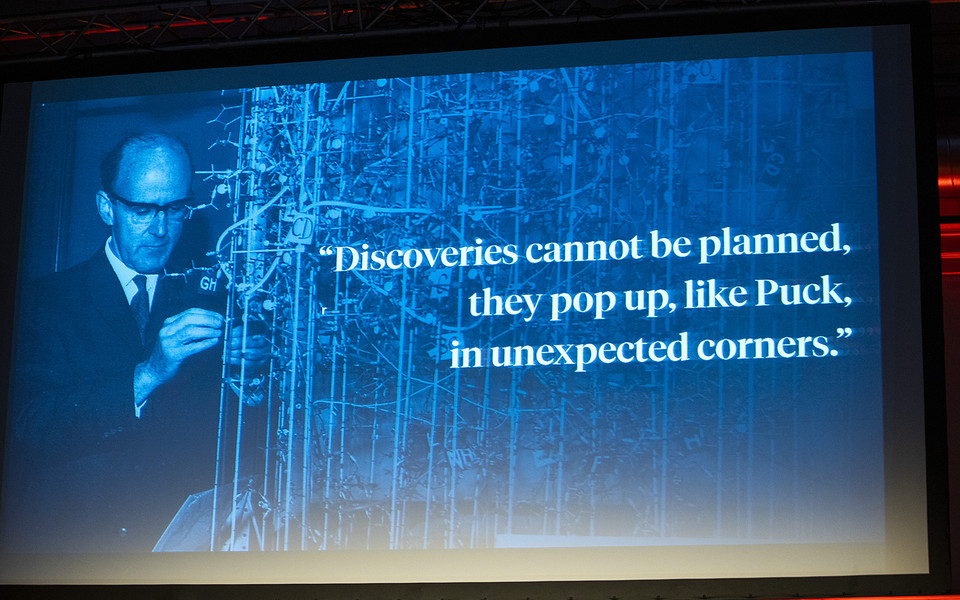
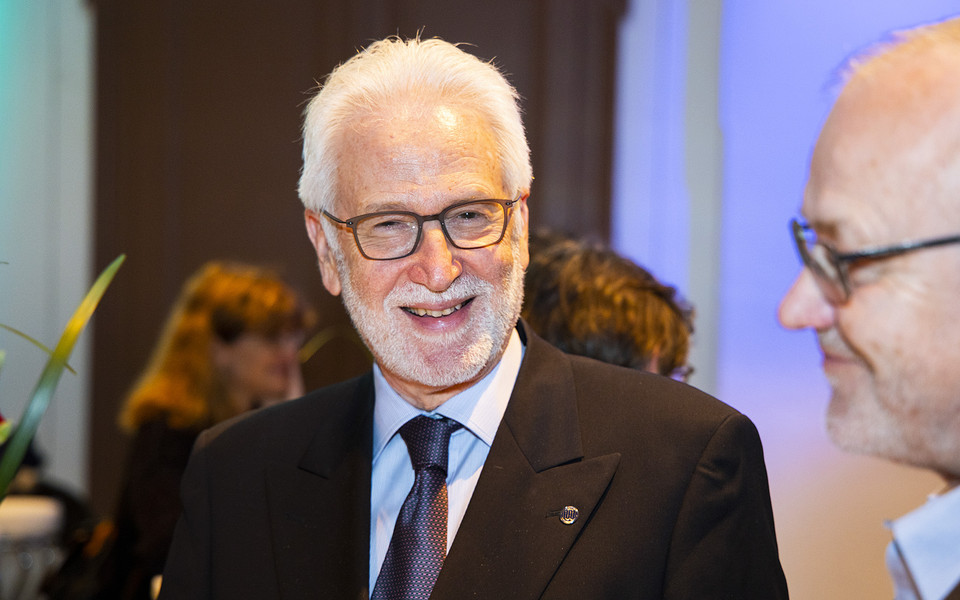
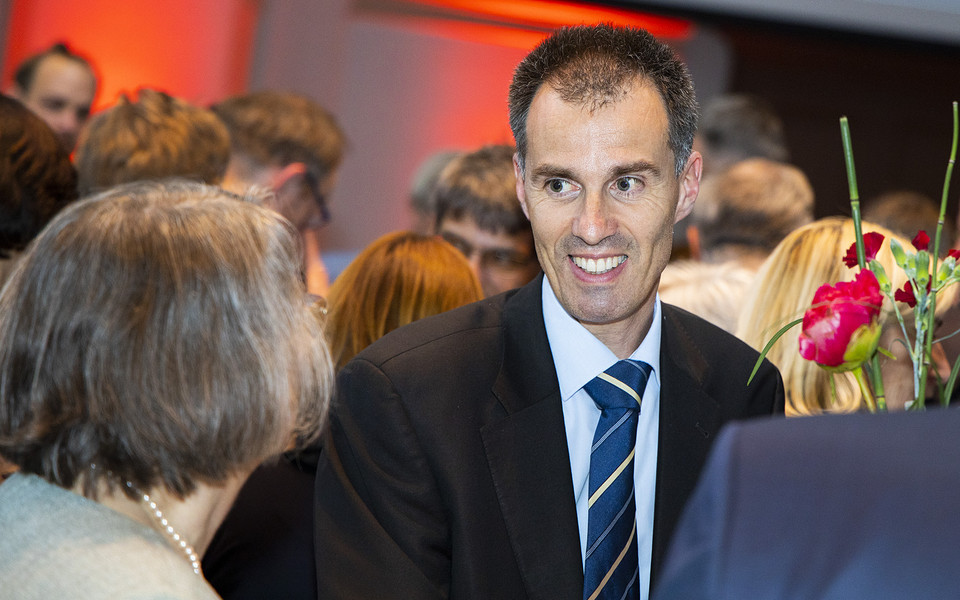
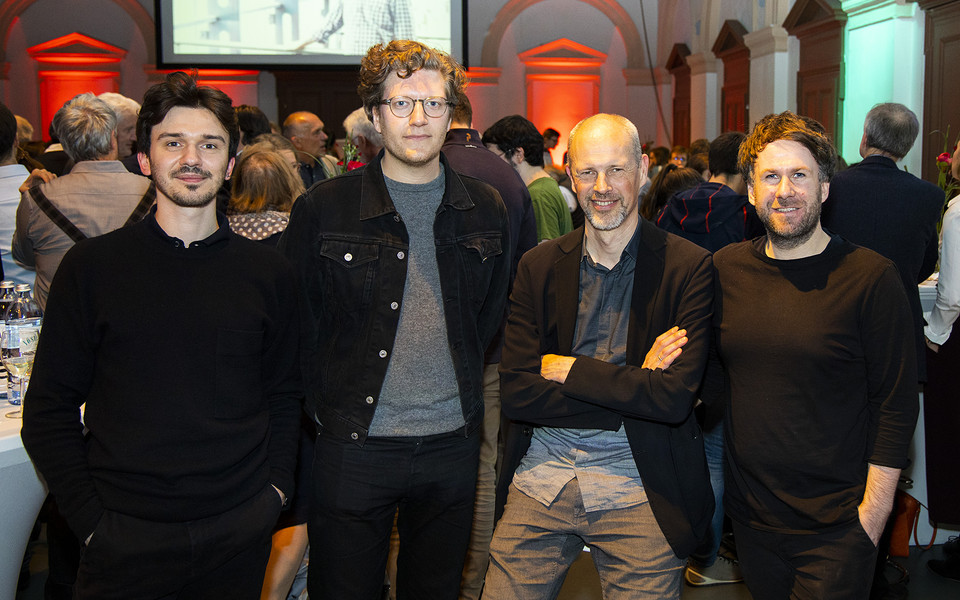
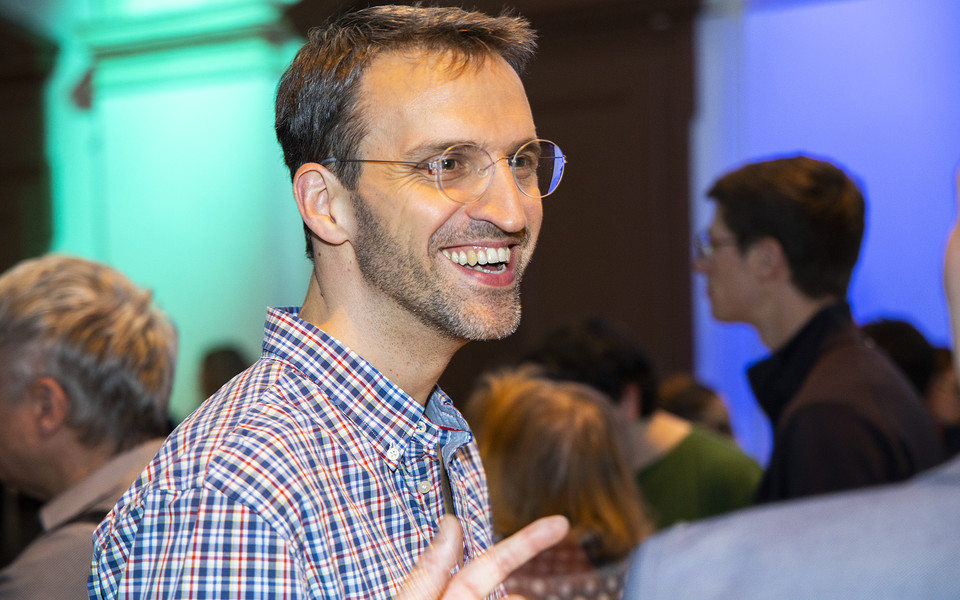
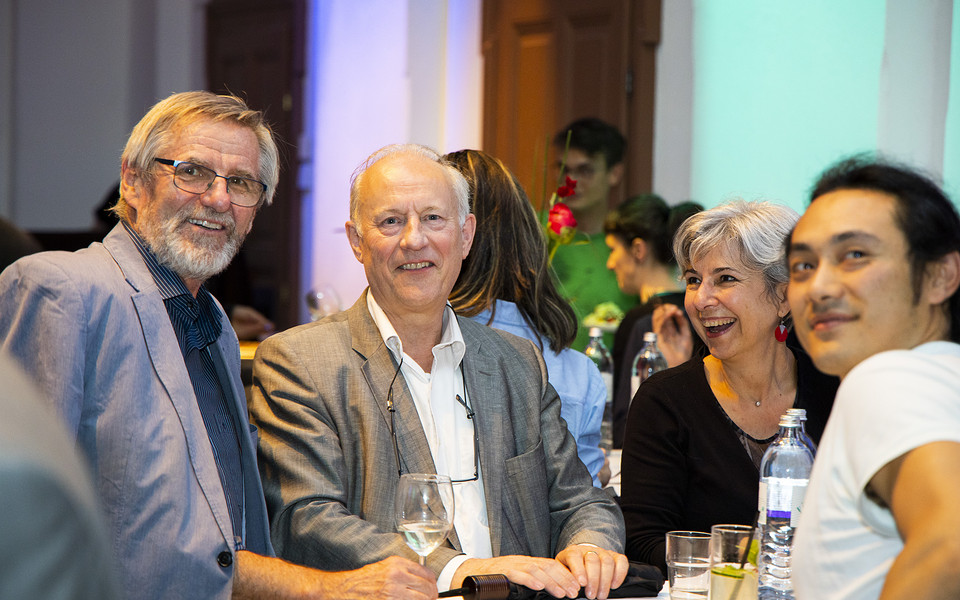
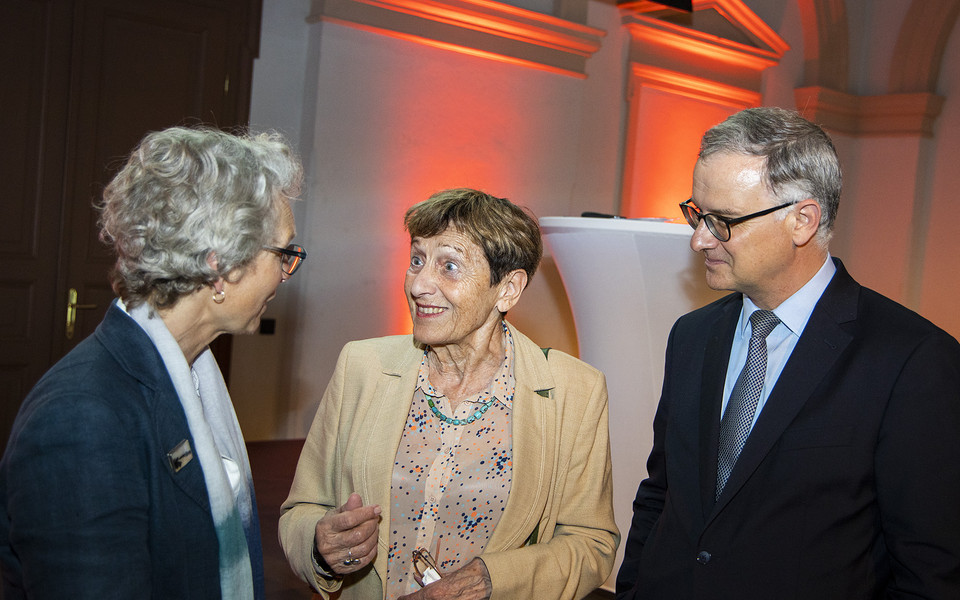
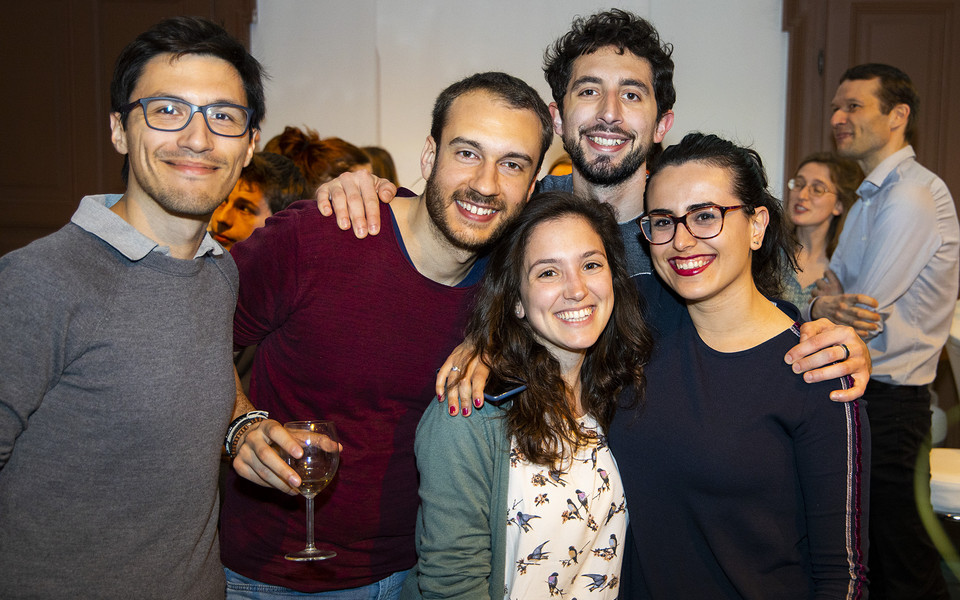
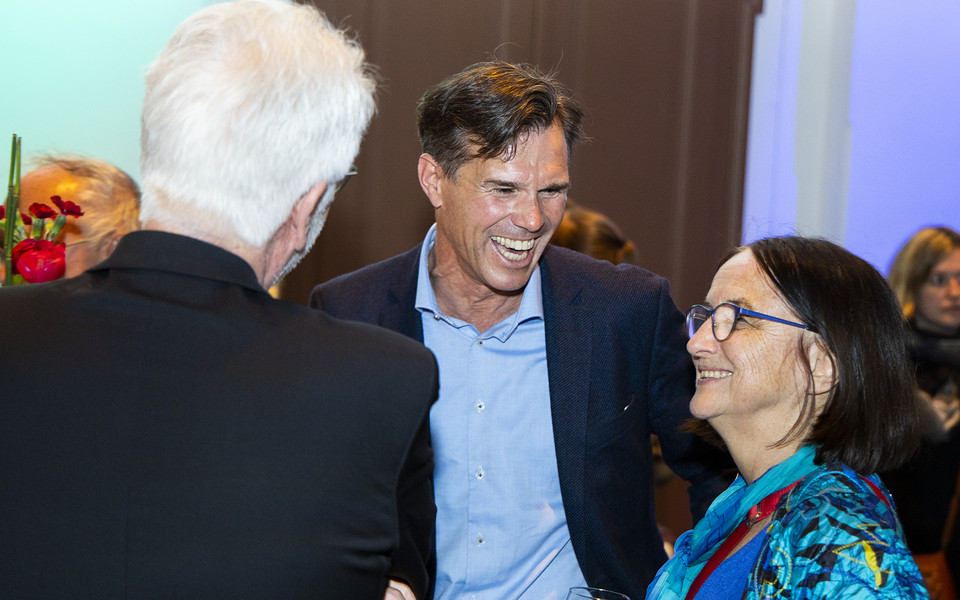
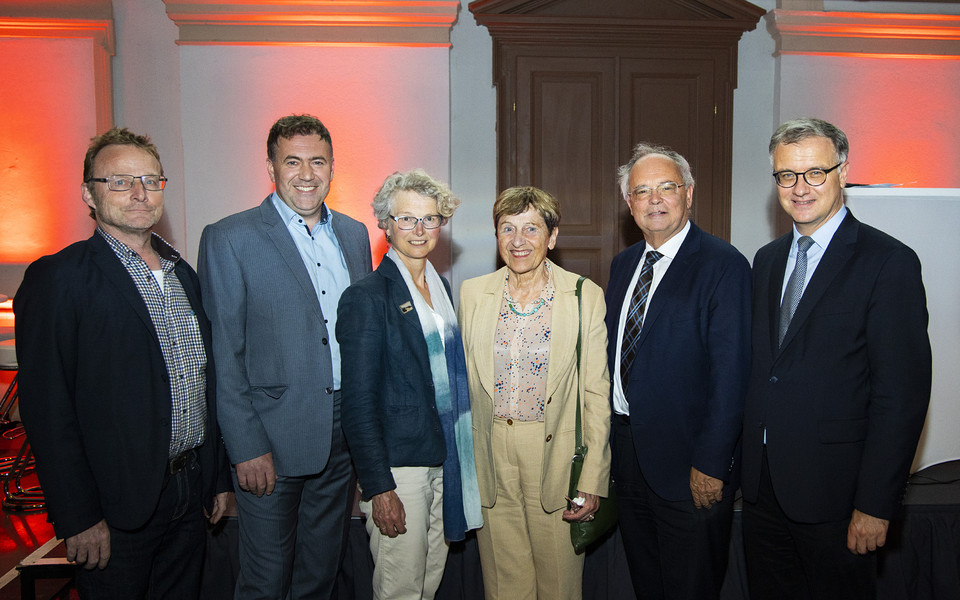
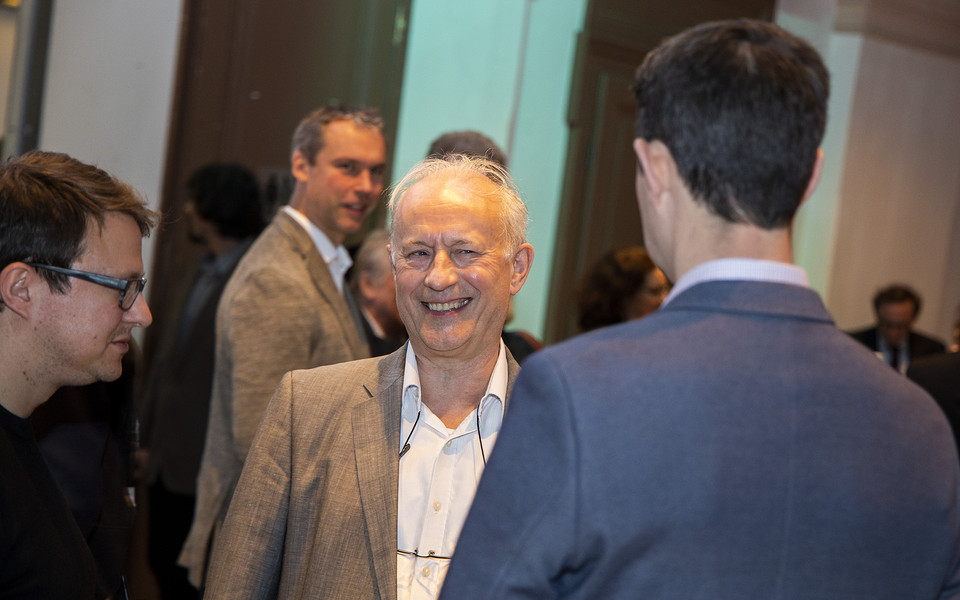
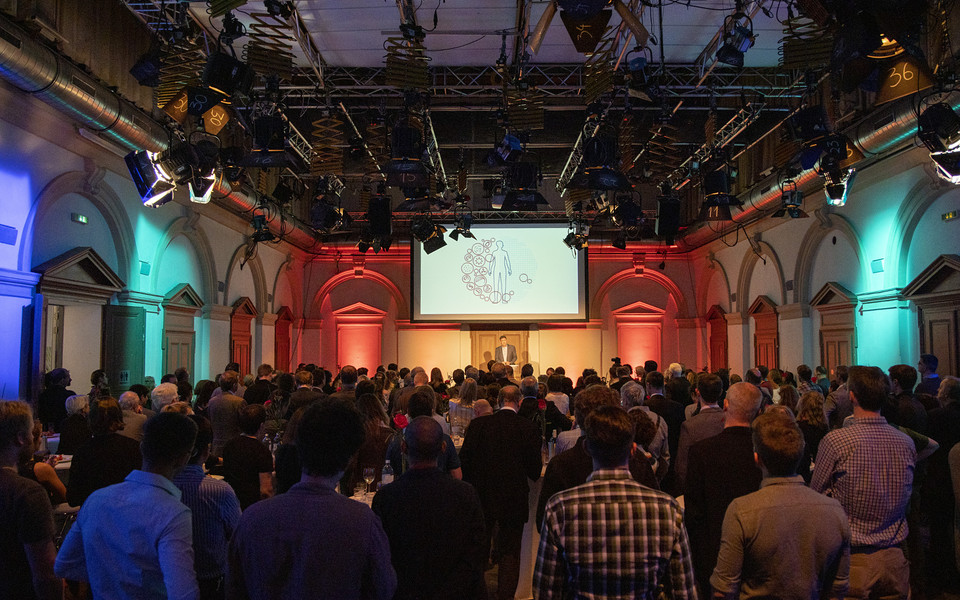
In his opening remarks, Rector Heinz Engl form the University of Vienna talked about the founding idea of the Max Perutz Labs: to form a link between basic research in molecular biology and medicine – a goal that will be supported by basic research at a molecular and mechanistic level.
Rector Markus Müller from the Medical University recalled his personal encounter with Max Perutz as a pupil. Both rectors highlighted the unique and successful history of the institute, and emphasized their dedication to further develop and strengthen the scientific profile of the Max Perutz Labs.
In her keynote speech, science writer and Max Perutz biographer Georgina Ferry honoured Max’s life and his passion for research by quoting his famous saying: “In science, truth always wins”. In the long term, individuals and the recognition they compete for are less important than the collective endeavor of the scientific community.
The evening also saw the presentation of the new name, logo, and website of the institute. The Max Perutz Labs Vienna will seek to uphold the values Max Perutz stood for: creating an open environment where ideas can be exchanged and international researchers can thrive.